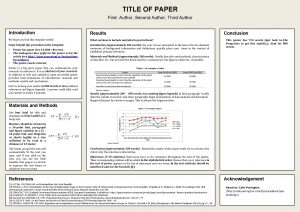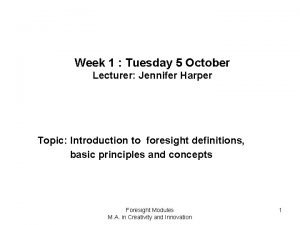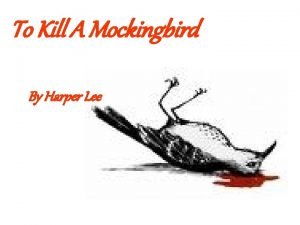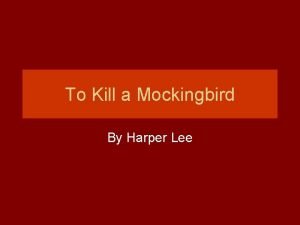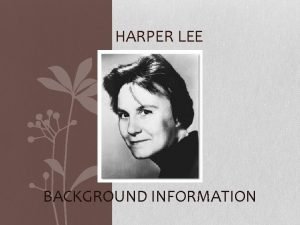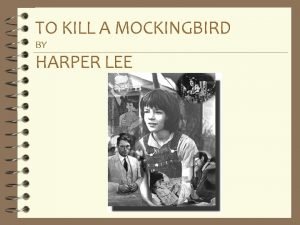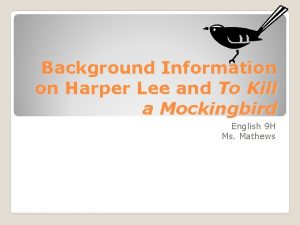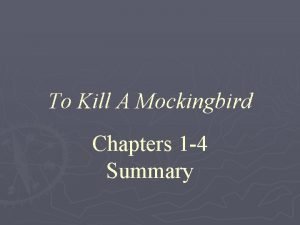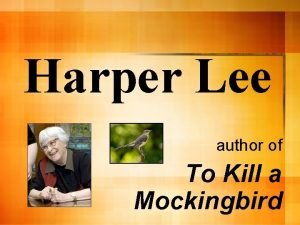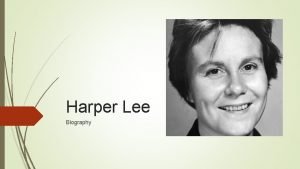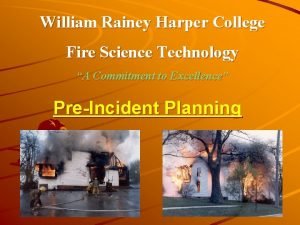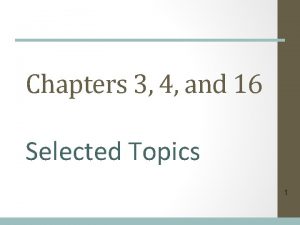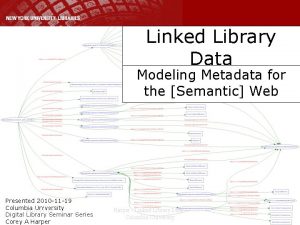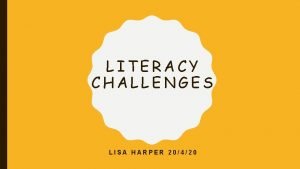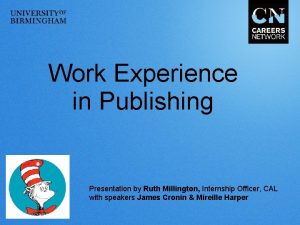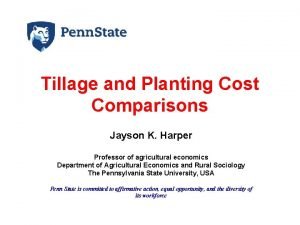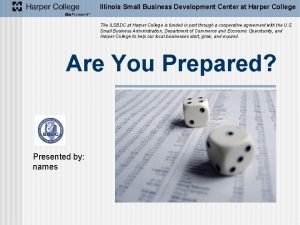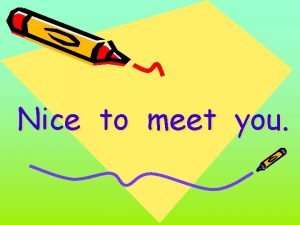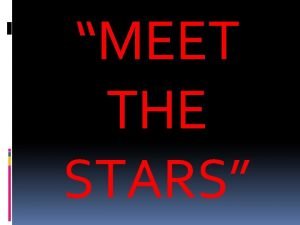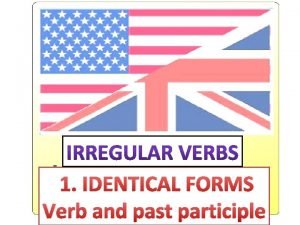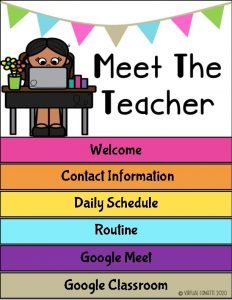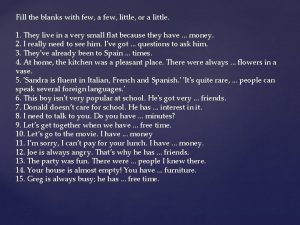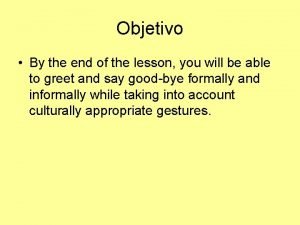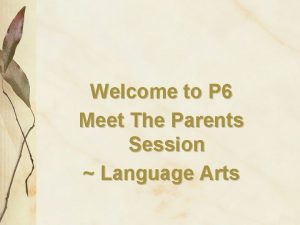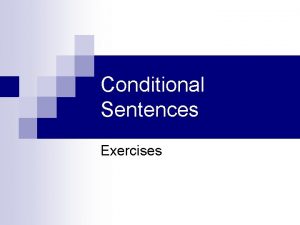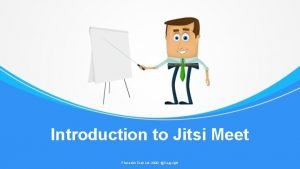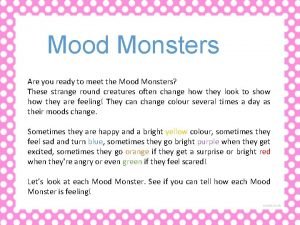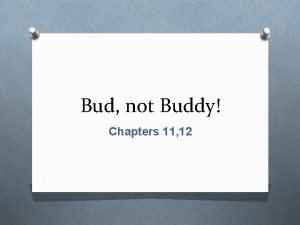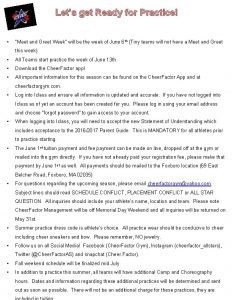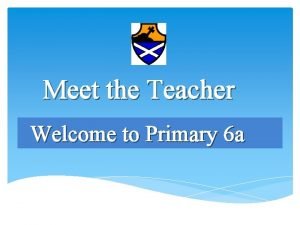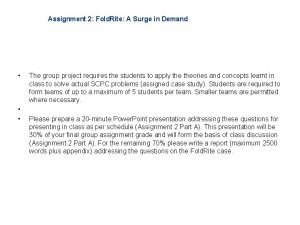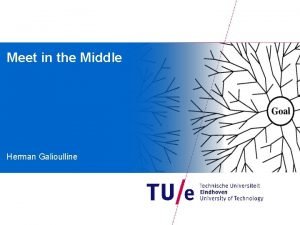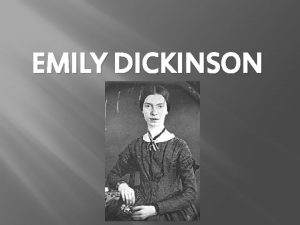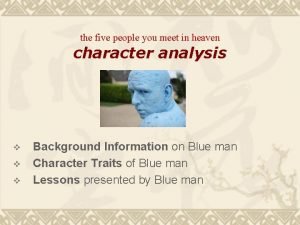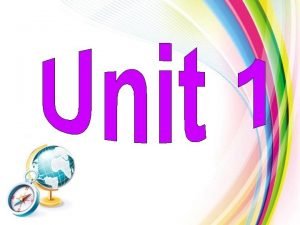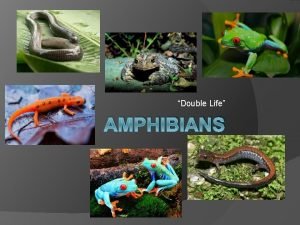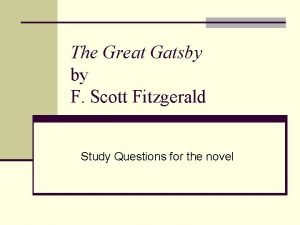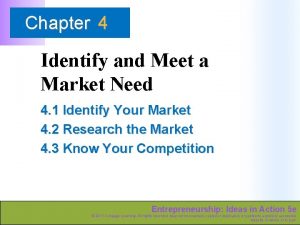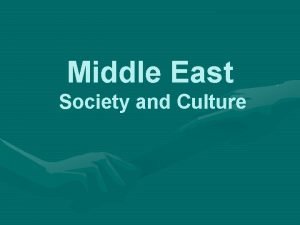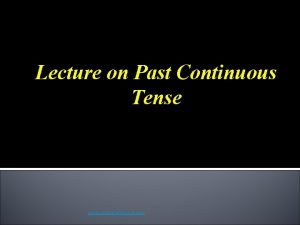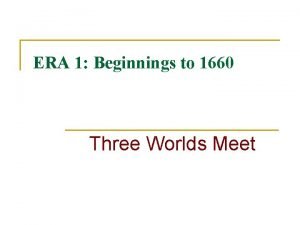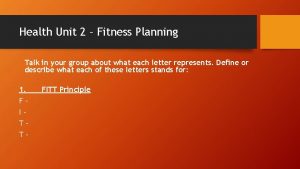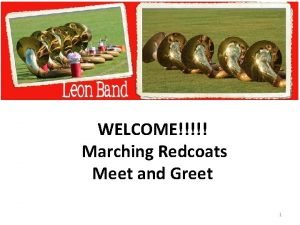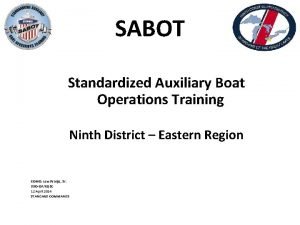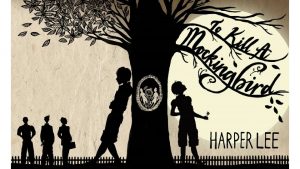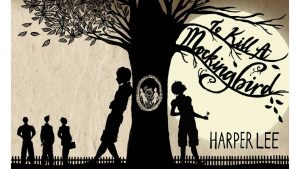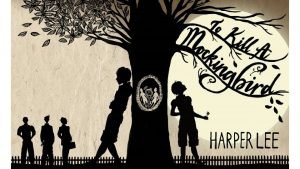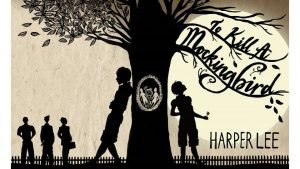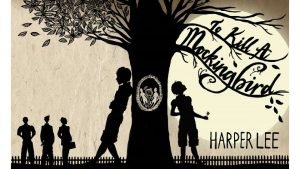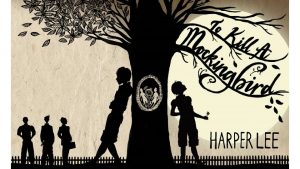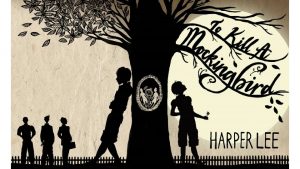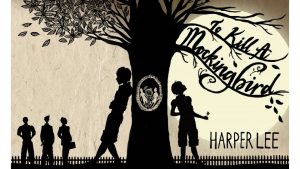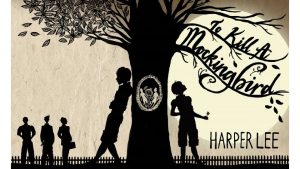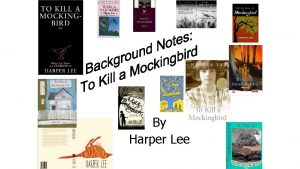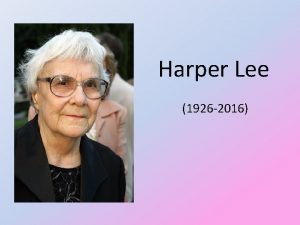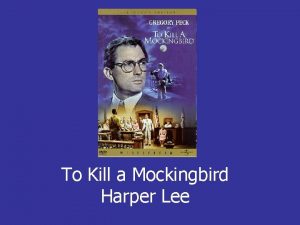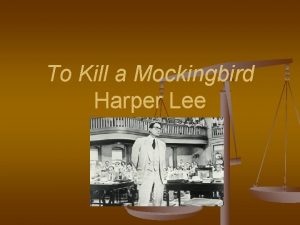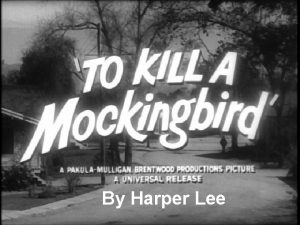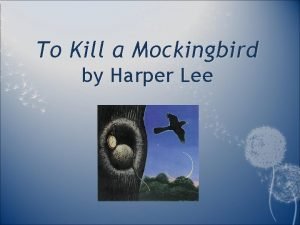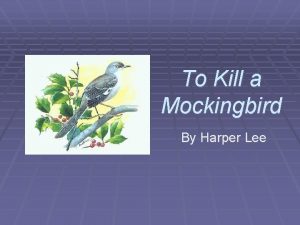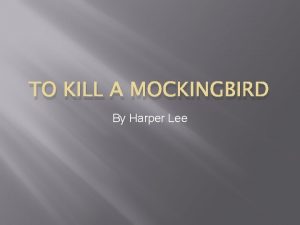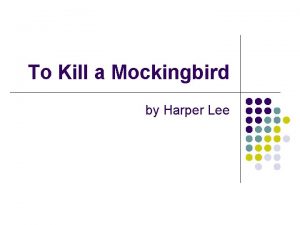1 Meet Harper Lee 2 Harper Lee Author

















































































- Slides: 81

1

Meet Harper Lee 2

Harper Lee Author of To Kill a Mockingbird • Harper Lee was born on April 28, 1926, as Nelle Harper Lee. • Lee was raised in Monroeville, Alabama during the 1930 s. 3

• Lee read avidly. • By the time she was a teenager, she had begun to set her sights on a writing career – a goal she shared with her childhood friend, wellknown author Truman Capote. 4

• Lee attended the University of Alabama. • She wrote reviews, editorials, and satires for college publications. • In 1949, Lee moved to New York City with the goal of becoming a writer. 5

• While working at other jobs, Lee submitted stories and essays to publishers. All were rejected. • An agent, however, took an interest in one of her short stories and suggested she expand it into a novel. • By 1957 she had finished a draft of To Kill a Mockingbird. 6

• A publisher to whom she sent the novel saw its potential but thought it needed reworking. • With her editor, Lee spent two and a half more years revising the manuscript. • By 1960 the novel was published. 7

• To Kill a Mockingbird was an immediate and widespread success. • Within a year, the novel sold half a million copies and received the Pulitzer Prize for fiction. • Within two years, it was turned into a highly acclaimed film. 8

To Kill a Mockingbird An Introduction to the Novel 9

To Kill a Mockingbird Introducing the Novel • In 1991, the Library of Congress conducted a survey of book readers. • Readers were asked to cite books that had made a difference in their lives. • The results of the survey: 1. Bible 2. To Kill a Mockingbird by Harper Lee 10

• Harper Lee’s novel, originally published in 1960, opens with an adult Scout Finch reminiscing her childhood. • Through Scout’s memories, the reader is transported into the world of a small southern town, Maycomb, Alabama, in the 1930 s. • Using a literary technique called flashback, Lee interrupts Scout’s chronological narrative to reach back in time and enhance and amplify the story with prior events. 11

• Throughout her childhood, Scout develops and expands her values and ideas as she encounters characters who come from all levels of Maycomb’s society. • Scout: • learns about justice and injustice by watching the trial of an African American man, Tom Robinson. • witnesses the divisions of class and race in her small town. • discovers courage, both in herself and in those around her, and she comes to respect the diversity of people in her community (people such as Tom Robinson and Boo Radley). 12

• The story Lee tells evolves in a world where children lose their innocence as they grow up and encounter the harsh realities of adult life. • Yet, Lee’s story is also about accepting people for who they are, whether they have a different skin color, like Tom Robinson, or are eccentric, like Boo Radley. 13

• Today, To Kill a Mockingbird is as widely read as it was in 1960. • But, it is more than a best-seller. It is a book that continues to influence its readers through its insightful depiction of human weaknesses and strengths in an imperfect society. 14

To Kill a Mockingbird Time and Place • To Kill a Mockingbird is set in a small town in rural Alabama in the early 1930 s. • Harper Lee, who was born in Monroeville, Alabama, would have been about the same age as Scout Finch at the time the story takes place. • Many of the events that Lee experienced as a child were incorporated into the story that she wrote more than thirty years later. 15

To Kill a Mockingbird The Great Depression • The novel is set during the Great Depression, at a time in which millions of Americans lost their jobs. • Many people also lost their homes, their land, and their dignity. • They lived in flimsy shacks and stood in bread lines to receive government handouts of food. • Some “rode the rails” to look for work in other towns, but the situation was dismal everywhere. 16

To Kill a Mockingbird The Great Depression • At the start of the Great Depression, about half of the African American population lived in the South. • With few jobs available, blacks often found themselves edged out by whites, even for the poorest paying jobs. • Racial tensions, which had existed since the end of the Civil War, increased. • Mob actions by whites that led to the hanging of African Americans and of those who sympathized with them continued throughout the South. 17

To Kill a Mockingbird 1930 s Alabama • In Alabama, as in other southern states, segregation was a way of life in the 1930 s. • Schools, restaurants, churches, courtrooms, hospitals, and all other public places had separate facilities for African Americans. • In some courts, African Americans were even required to swear on separate Bibles. • The Ku Klux Klan (KKK), a southern terrorist group, preached white superiority and engaged in violence against African Americans. 18

To Kill a Mockingbird The Scottsboro Trials • By the time Harper Lee was old enough to read a newspaper, the notorious Scottsboro Trials had been in the news for several years. • The Alabama trial, which made national headlines, served as an ugly reminder of racial bigotry in the 1930 s. 19

To Kill a Mockingbird The Scottsboro Trials • In March 1931, nine African American youths were arrested and charged with raping two white women. • Over the next five years, a series of trials were held. The first trial began just twelve days after the arrest and lasted only three days. • In spite of evidence of the men’s innocence, eight of the nine men were found guilty and sentenced to death. • The case was appealed all the way to the Supreme Court, and several sets of new trials were held. • By 1937, four of the defendants were freed, while the others were sentenced to long prison terms. • *On April 19, 2013, Alabama Governor Robert Bentley signed legislation officially pardoning and exonerating all nine Scottsboro boys. 20

To Kill a Mockingbird The Scottsboro Trials • The Scottsboro Trials share several similarities with the fictional trial of Tom Robinson in To Kill a Mockingbird. • Like the Scottsboro defendants, Tom is charged with raping a white woman. • There is also a parallel between Atticus Finch and Judge James E. Horton. Both acted in the interest of justice when an African American was wrongfully accused. • In a 1933 trial of one of the Scottsboro defendants, Judge Horton set aside the jury’s guilty verdict because he believed the jurors had ignored the evidence. • Both the fictional and real trials had all-white juries. In the South of the 1930 s, African American citizens were commonly excluded from serving on juries. 21

To Kill a Mockingbird First-Person Point of View • To Kill a Mockingbird is told from a first-person point of view. • Although the narrator is an adult Scout Finch looking back at her childhood, the perspective is limited to what she saw and felt at that time. • Scout the 6 -year-old often does not understand the full meaning of what she observes, and her childlike perceptions are frequently a source of humor, as when she says of her father, “Atticus was feeble (weak). He was nearly fifty. ” Yet even in this instance, the narrator does not confine her vocabulary to that of a child. 22

To Kill a Mockingbird Pre-Reading: The Individual in Society 23

To Kill a Mockingbird The Individual in Society: Essential Questions • What is identity? To what extent do we determine our own identities? What influence does society have? • What are stereotypes, and how do they affect how we see ourselves and how others see us? • How does our need to belong influence our identity? How does it lead to the formation of “in” groups and “out” groups in our society? 24

To Kill a Mockingbird Rationale: The Individual in Society • The plot of To Kill a Mockingbird is driven forward by the conflict that the main characters experience as their beliefs about justice and morality come into conflict with the mores of the society they inhabit. • The novel links two primary plots: 1. Atticus Finch’s effort to follow his conscience and break the unwritten rules of the Jim Crow criminal justice system. 2. The socialization of Atticus’s children, Scout and Jem, as they negotiate the spoken and unspoken rules of their community. • Throughout the novel we observe these three individuals seeking to define their identities both within and in opposition to their society’s moral universe. 25

To Kill a Mockingbird Identity • One’s identity is a combination of many things. • It includes: • the labels others place on us, as well as ideas we have about who we want to be. • gender, ethnicity, religion, occupation, and physical characteristics. • ties to a particular neighborhood, school, community, or nation. • our values and beliefs. • the experiences that have shaped our lives. 26

To Kill a Mockingbird Activities for Deeper Understanding • Handout 1. 1: Creating an Identity Chart *Kristin will distribute 27

To Kill a Mockingbird Activities for Deeper Understanding • Handout 1. 3: Two Names, Two Worlds Jonathan Rodriguez explains that while his name reflects “two worlds” that have influenced who he is, it also fails to capture the full complexity of his identify. As you will discover in To Kill a Mockingbird, names can sometimes influence the assumptions people make about an individual’s identity and character, but those assumptions are often false. *Kristin will distribute 28

To Kill a Mockingbird Activities for Deeper Understanding Two Names, Two Worlds: Connection Questions 1. What does Rodriguez mean when he uses the phrase “two names, two worlds”? What two worlds does his name represent? 2. What assumptions does Rodriguez think others might make about his identity because of his name? Which of those assumptions are true? Which are false? 3. What does your name suggest about your identity? To what extent does it influence how others think about you? How does it affect how you think about yourself? 29

To Kill a Mockingbird Moral Growth • As we read To Kill a Mockingbird, we will examine human behavior. Specifically, we will reflect on the moral growth of the main characters as their senses of right and wrong are challenged by their society’s written and unwritten rules about race, class, and gender. • After reading the novel, we will analyze how the main characters have changed over the course of the novel. Specifically, we will focus on the characters’ moral development. 30

To Kill a Mockingbird Stereotype “We all know we are unique individuals, but we tend to see others as representatives of groups. It’s a natural tendency, since we must see the world in patterns in order to make sense of it; we wouldn’t be able to deal with the daily onslaught of people and objects if we couldn’t predict a lot about them and feel that we know who or what they are. ” Deborah Tannen, You Just Don’t Understand (New York: Marrow, 1990), 16. • Do you agree? • What is the benefit of seeing the world in patterns and viewing others as representatives of groups? • What gets lost when we categorize our experiences in this way? • What kinds of stories do we attach to the groups we use to categorize other people? • When is it offensive or harmful to see others as representatives of groups? 31

To Kill a Mockingbird Stereotype • Define the word “stereotype. ” • Think about the following: • Connotation – is it positive or negative? • Does the connotation of the word imply that stereotypes are useful or harmful? • When does a judgment about an individual based on the characteristics of a group become offensive? 32

To Kill a Mockingbird Activities for Deeper Understanding • Handout 1. 2: How Stereotypes Affect Us and What We Can Do The concept of “stereotype threat” explains one significant way that stereotypes can affect one’s identity, choices, and behavior. The 8 -minute video “How Stereotypes Affect Us and What We Can Do” introduces this concept through the accounts of individuals who have experienced it and the research of social psychologist Claude Steele. *Kristin will distribute https: //www. facinghistory. org/resource-library/video/how-stereotypesaffect-us-and-what-we-can-do 33

To Kill a Mockingbird During Reading: Maycomb’s Ways 34

To Kill a Mockingbird Maycomb’s Ways: Essential Questions • How does our identity influence the choices we make? How does analyzing character help us understand the choices characters in literature make? • How does the “moral universe” in which we live affect the choices we make? How does analyzing setting help us understand the choices characters in literature make? 35

To Kill a Mockingbird Rationale: Maycomb’s Ways • In order to understand the moral choices depicted in To Kill a Mockingbird, we must first look at both the identities of those making moral choices and the context in which they are made. • In other words, we must start by examining character and setting. 36

To Kill a Mockingbird Character • When Atticus, in Chapter 3, famously advises Scout that “you never really understand a person until you consider things from his point of view, ” he might as well be offering us advice on understanding character in a work of fiction. • Literature gives us the power to pay respectful attention to people and perspectives that are different from us in time, place, and experience. 37

To Kill a Mockingbird Character • In Chapters 1 through 7 of To Kill a Mockingbird, readers will meet and establish first impressions of most of the important characters in the novel including Scout, Jem, Atticus, Calpurnia, Dill, and Boo Radley. • To pay respectful attention to these characters is to go beyond their surface traits and to seek to understand as best we can how each thinks about the world around them. By doing so, we can better understand the choices they make in the book and more deeply reflect on ourselves as moral actors in our own world. 38

To Kill a Mockingbird Character and Setting • But character is not sufficient for fully understanding the choices made by Scout, Jem, Atticus, and the other residents of Maycomb. • We must also put those choices into context by examining the circumstances in which they are made. • When we examine these circumstances, we are examining setting. 39

To Kill a Mockingbird Setting • Setting goes well beyond simply establishing the time and place of the novel. • To meaningfully understand the setting of To Kill a Mockingbird requires understanding the moral universe in which the story takes place. In other words, it requires having a sense of the rules (written and unwritten), constraints, possibilities, potential conflicts, and possible consequences that affect the choices the characters make. • Without this knowledge, we cannot adequately analyze, understand, or learn from the behavior of the characters. 40

To Kill a Mockingbird Character and Setting • As you begin to read, you will begin to understand the moral universe of Maycomb, Alabama both through analyzing the text itself and through investigating some of the historical context into which Harper Lee has placed her characters. • By looking closely at what the characters say and do, as well as how they act toward each other, you will begin to understand Maycomb’s ways. 41

To Kill a Mockingbird Chapters 1 -7: Plot Summary • Jean Louise “Scout” Finch opens by introducing the setting of Maycomb, Alabama, and some main characters: Jem, Atticus, Calpurnia, and Dill Harris. • Jem and Scout tell the story of Boo Radley, and the trio spends the summer playing and daring one another to get closer to the Radley house. 42

To Kill a Mockingbird Chapters 1 -7: Plot Summary • When the summer ends, Scout starts school, and her first day turns out to be a disaster when she is punished by her teacher for knowing how to read. • The teacher, who is new to Maycomb, has trouble understanding the dynamics of the different students in the classroom – namely, the difference between two impoverished families: • the Cunninghams, who don’t like to take things they cannot repay • the Ewells, who have never done an honest day’s work 43

To Kill a Mockingbird Chapters 1 -7: Plot Summary • At the end of the school year, Dill returns to Maycomb, and he, Jem, and Scout resume their attempts to make Boo Radley come out of his house. • They find a series of small trinkets in the knot-hole of a tree at the edge of the Radleys’ property. • When the three friends make a last attempt to see Boo, Jem loses his pants in the Radleys’ yard, only to find them repaired and waiting for him later that night. • After Scout and Jem leave a note thanking the person who is leaving them presents in the tree, Mr. Nathan Radley fills the knot-hole with cement. 44

To Kill a Mockingbird Chapters 1 -7: Skills Focus • Understanding the setting as a “moral universe” • Getting to know the characters: • Main characters: Scout, Jem, Atticus • Secondary characters: Dill, Calpurnia, Miss Maudie, Miss Caroline, Boo Radley, Walter Cunningham, Burris Ewell • Investigating the author’s craft: descriptive language • Deepening understanding of the novel through analysis of historical context from informational texts 45

To Kill a Mockingbird Chapters 1 -7: Academic Vocabulary • Define the following terms: • • • • Dictum Eccentric Quaint Malevolent Morbid Predilection Indigenous Illicit Sentimentality Entailment Monosyllabic Misdemeanor Capital felony Auspicious Benevolence Edification 46

To Kill a Mockingbird Exploring the Text: Connection Questions • In addition to reading closely, you will also answer Connection Questions for each chapter of the text. • These questions are designed to help you understand the text and also provide the basis for a class discussion of the text. 47

To Kill a Mockingbird Chapter One 48

To Kill a Mockingbird Connection Questions: Chapter One • In the second paragraph of the novel, Scout says that the events leading up to Jem’s broken arm started with the Ewells (another family in Maycomb), but Jem “said it started long before that. ” • How does Jem’s comment relate to the family history Scout provides over the next couple of pages? • What is Harper Lee suggesting about the influence of the past on the events that take place in the novel? 49

To Kill a Mockingbird Connection Questions: Chapter One • Reread Scout’s description of Maycomb in the first chapter, beginning with “Maycomb was an old town, but it was a tired old town when I first knew it. ” • What words does Harper Lee, with Scout as the narrator, use to paint a picture of Maycomb? • If Maycomb were a person, how would you describe its personality? 50

To Kill a Mockingbird Connection Questions: Chapter One • What kind of figurative language does Harper lee use in the following description? “Ladies bathed before noon, after their three-o’clock naps, and by nightfall were like soft teacakes with frosting of sweat and sweet talcum. ” • What does this description suggest about the role of women in Maycomb? 51

To Kill a Mockingbird Connection Questions: Chapter One • Harper Lee does not directly tell the reader the exact years in which the novel takes place. • What are some clues that she provides to help the reader determine the time period? 52

To Kill a Mockingbird Connection Questions: Chapter One • What facts are revealed about the history of the Radleys in this chapter? • What gossip and legend about the Radleys is revealed? • How do you know the difference between the facts and the gossip? 53

To Kill a Mockingbird Chapter Two 54

To Kill a Mockingbird Connection Questions: Chapter Two • Scout tells us the following about her teacher on the first day of school: “Miss Caroline was no more than twenty-one. She had bright auburn hair, pink cheeks, and wore crimson fingernail polish. She also wore high-heeled pumps and a red-and-white-striped dress. She looked and smelled like a peppermint drop. ” • Analyze the descriptive language Lee uses to describe Miss Caroline. • What words or phrases help you visualize her? • What figurative language does the author use? • How does the author use the description of Miss Caroline to suggest something about her personality and style as a teacher? • How does the description accentuate the personality clash between Scout and her teacher? 55

To Kill a Mockingbird Connection Questions: Chapter Two • Scout reflects: “Until I feared I would lose it, I never loved to read. One does not love breathing. ” • What comparison is Lee suggesting in these two sentences? • What does it suggest about how Scout thinks about reading? 56

To Kill a Mockingbird Connection Questions: Chapter Two • When Scout introduces Walter to her teacher by saying, “Miss Caroline, he’s a Cunningham, ” what does Scout assume that Miss Caroline will automatically understand about him? • What characteristics do the residents of Maycomb automatically associate with “the Cunningham tribe”? 57

To Kill a Mockingbird Connection Questions: Chapter Two • How does our membership in various groups – families, schools, neighborhoods, nations – affect how others think about us? • How does it affect how we think about ourselves? • Are those impressions ever accurate? 58

To Kill a Mockingbird Connection Questions: Chapter Two • How are readers and Miss Caroline similar in their understanding of Maycomb society at this point in the novel? • How does Harper Lee use the character of Miss Caroline to introduce readers to what everyone else in Maycomb already “knows”? 59

To Kill a Mockingbird Connection Questions: Chapter Two • What words and phrases do Scout and Atticus use to describe the Cunninghams in this chapter? • How are the Cunninghams different from the Finches? • How are they similar? 60

To Kill a Mockingbird Close Reading: Chapter Three *Kristin will distribute 61

To Kill a Mockingbird Chapter Three 62

To Kill a Mockingbird Connection Questions: Chapter Three • What does Scout mean when she says, “By the time we reached our front steps Walter had forgotten he was a Cunningham”? 63

To Kill a Mockingbird Connection Questions: Chapter Three • According to Atticus, who are the “common folk” in Maycomb? • What characteristics does he say, or imply, are shared by the “common folk”? • Who does Atticus say are not included in the “common folk”? Why are they excluded? 64

To Kill a Mockingbird Connection Questions: Chapter Three • What do we mean when we talk about someone’s social or economic class? • What is it (class) supposed to tell you about someone? 65

To Kill a Mockingbird Connection Questions: Chapter Three • How does Atticus distinguish between the Cunninghams and the Ewells? • Is either family part of the “common folk” of Maycomb? • How do the two families differ in class and status from each other and from the Finches? • What specific evidence from the text helps explain why his opinion of the two families differ? 66

To Kill a Mockingbird Connection Questions: Chapter Three • Compare and contrast the descriptions Scout provides of Burris Ewell and Little Chuck Little. • How do the similarities and difference between these two classmates support Atticus’s opinion about the Ewell family? 67

To Kill a Mockingbird Connection Questions: Chapter Three • In this chapter we learn about more about the Finches, the Cunninghams, and the Ewells. • Which of the characters in this chapter have the most power and the highest status in Maycomb? • What have the least power and status? • What accounts for those differences? 68

To Kill a Mockingbird Connection Questions: Chapter Three • How does Calpurnia fit into the social hierarchy in this chapter? • Which characters have more power than she does? • Who has less? 69

To Kill a Mockingbird Connection Questions: Chapter Three • How do race, class, and gender affect one’s position in Maycomb society? • How might Atticus use race, class, and gender to describe the “common folk”? • What role do they play in determining one’s position in your society today? 70

To Kill a Mockingbird Connection Questions: Chapter Three • How do particular situations and circumstances affect how our identity is perceived? • How might Calpurnia’s identity be different in the Finch home from her identity in her own home? 71

To Kill a Mockingbird Connection Questions: Chapter Three • Atticus tells Scout, “If you can learn a simple trick, Scout, you’ll get along a lot better with all kinds of folks. You never really understand a person until you consider things from his point of view… until you climb into his skin and walk around in it. ” • Can you ever fully understand another person’s point of view? • What is the value in trying? • Define the word empathy. How does Atticus’s advice relate to empathy? 72

To Kill a Mockingbird Chapter Four 73

To Kill a Mockingbird Connection Questions: Chapter Four • Jem and Dill continue to swap gossip, superstition, and exaggeration in this chapter. • What are some examples of superstitions that they discuss? • What effect do they have on Scout? 74

To Kill a Mockingbird Connection Questions: Chapter Four • What do Jem and Scout agree to do with the items they find in the tree on the edge of the Radleys’ yard? • What conclusions about these items does Jem seem to be making without sharing with Scout? • Scout says, “Before Jem went to his room, he looked for a long time at the Radley place. He seemed to be thinking again. ” What do you think Jem was thinking about? 75

To Kill a Mockingbird Connection Questions: Chapter Four • How does the fact that Scout is the narrator affect the reader’s ability to understand Jem’s point of view? 76

To Kill a Mockingbird Connection Questions: Chapter Four • Despite Jem’s disagreement, Scout says she thinks that Boo Radley is in the Radley home and watching the kids play. • Why does Scout feel so certain? • When does Scout share her evidence with the reader? • How does Lee foreshadow that revelation? 77

To Kill a Mockingbird Connection Questions: Chapter Four • According to Scout, Calpurnia called the Hot Steam superstition that Jem and Dill describe “nigger-talk. ” • What does Calpurnia mean? 78

To Kill a Mockingbird Connection Questions: Chapter Four • How can words divide people? • Why do some words create more powerful divisions than others? 79

To Kill a Mockingbird Connection Questions: Chapter Four • How does Jem use stereotypes about gender to influence Scout? • How does Scout feel about her gender? • How do you know? 80

To Kill a Mockingbird Connection Questions: Chapter Four • How can stereotypes, especially about race, gender, and class, affect our behavior, even when we are trying to disprove them? 81
 First author second author third author
First author second author third author God be with you till we meet again images
God be with you till we meet again images Jennifer harper-lee
Jennifer harper-lee Qt on mockingbird and 35
Qt on mockingbird and 35 Harper lee birth
Harper lee birth Harper lee short biography
Harper lee short biography The genre of to kill a mockingbird
The genre of to kill a mockingbird Harper lee background information
Harper lee background information To kill a mockingbird by harper lee summary
To kill a mockingbird by harper lee summary To kill a mockingbird summary
To kill a mockingbird summary Harper lee background information
Harper lee background information To kill a mocking bird chapter summary
To kill a mocking bird chapter summary Harper lee sandra bullock
Harper lee sandra bullock When and where was harper lee born
When and where was harper lee born Harper college fire science
Harper college fire science Dr peter harper
Dr peter harper Harper college blackboard
Harper college blackboard Harper reynolds sex
Harper reynolds sex Powerschool harper creek
Powerschool harper creek Dr william harper hamilton
Dr william harper hamilton Val harper
Val harper Paragraph from to kill a mockingbird
Paragraph from to kill a mockingbird Harper industries has $900 million
Harper industries has $900 million Harper
Harper To kill a mockingbird acrostic poem
To kill a mockingbird acrostic poem Dr william harper hamilton
Dr william harper hamilton Ruth millington
Ruth millington Jayson npm
Jayson npm Isabelle valet-harper
Isabelle valet-harper Harper college
Harper college Harper college business office
Harper college business office Judith pennywell
Judith pennywell Serily
Serily Meet you
Meet you Meet maria sharapova
Meet maria sharapova Verb of identical
Verb of identical Area of low pressure where air masses meet and rise
Area of low pressure where air masses meet and rise Google meet
Google meet I meet raisa last night. ... signed ... t-shirt. *
I meet raisa last night. ... signed ... t-shirt. * Google meet
Google meet Que significa nice to meet you
Que significa nice to meet you Meet elie wiesel
Meet elie wiesel Meet rosina
Meet rosina Stand simple past tense
Stand simple past tense Stansw meet the markers
Stansw meet the markers Meet the parents session
Meet the parents session Hello, nice to meet you
Hello, nice to meet you If we sneak out quietly nobody notice
If we sneak out quietly nobody notice Jitsi meet architecture
Jitsi meet architecture Meet the modern learner
Meet the modern learner Meet the mood
Meet the mood Chapter 11 bud, not buddy summary
Chapter 11 bud, not buddy summary Meet the shapes
Meet the shapes Lets meet and greet
Lets meet and greet Laura blosser jmu meet me
Laura blosser jmu meet me Meet
Meet Hi everybody nice to meet you all
Hi everybody nice to meet you all Foldrite furniture case study
Foldrite furniture case study The place where two plates meet
The place where two plates meet The hydrosphere and lithosphere meet
The hydrosphere and lithosphere meet Nice to meet ya mucho gusto
Nice to meet ya mucho gusto Meet in the middle algorithm
Meet in the middle algorithm I measure every grief i meet poem
I measure every grief i meet poem The five people you meet in heaven lessons
The five people you meet in heaven lessons Nice to meet you poem
Nice to meet you poem Shakespeare descendants today
Shakespeare descendants today Nice to meet you conversation
Nice to meet you conversation Present continuous tense用法
Present continuous tense用法 Cutaneous respiration
Cutaneous respiration How does nick meet tom's mistress in the great gatsby
How does nick meet tom's mistress in the great gatsby Find market n
Find market n Millet system
Millet system Wat betekent hecto
Wat betekent hecto My brother and sister playing tennis at 11am yesterday
My brother and sister playing tennis at 11am yesterday Therefore
Therefore Visual effects meet
Visual effects meet What does juliet say she would rather do than marry paris?
What does juliet say she would rather do than marry paris? Nice to meet you what's your name
Nice to meet you what's your name Three worlds meet quiz
Three worlds meet quiz Goofgle maps
Goofgle maps Meet and greet agenda
Meet and greet agenda Meet her helm command
Meet her helm command
